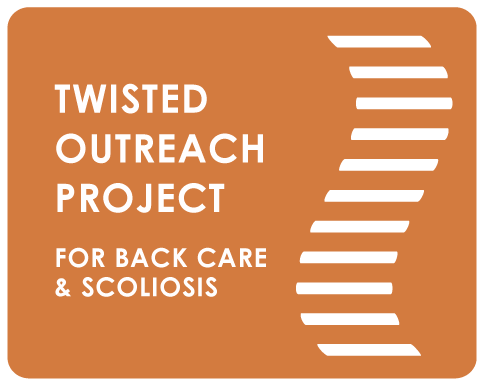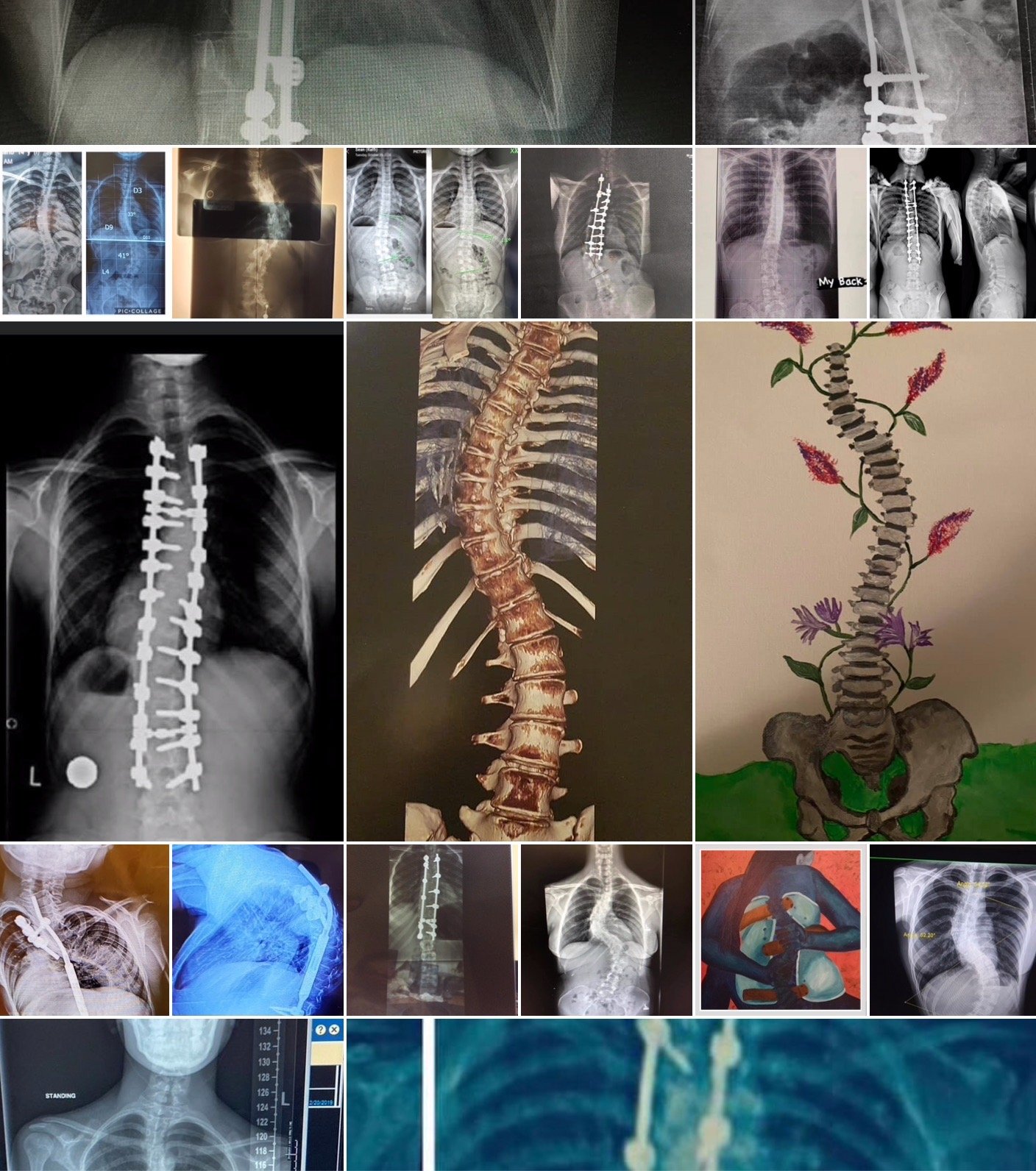Focus on Fusion
This is Part 44 of a serial blog originally titled 'Martha Carter's Healing Journey'. Curious about the earlier posts? To start from the beginning, read Part 1.
***
“You are only as young as your spine is flexible.” —Joseph Pilates
Fall Fusion Focus and beyond…
It has taken me a long time, but I am finally understanding that there are profound differences between living-working-surviving with an unfused scoliosis and a fused scoliosis.
The majority of people with scoliosis do not undergo corrective surgery and therefore they have the opportunity to connect to their twists and curves without any obstruction from hardware and fused vertebrae. Of course, twists and curves can be extremely uncomfortable and difficult to manage, but at the very least, they are ‘natural’.
As our regular readers know, TOPS holds all kinds of classes, workshops and retreats where people can learn how to help themselves through therapeutic movement such as Yoga for Scoliosis, Essential Somatics™, ScoliPilates and more. There are also other effective scoliosis-focused programs available around the world such as Scolismart, Schroth, physiotherapy and weight training, to name the most common ones. We also encourage people with unfused scoliosis to seek supportive care, such as massage, energy work, acupuncture, counseling, nutrition practices, etc, which support comfort and healing in myriad ways.
Over time, people who commit to exploring these systems can often find more ease of mobility, leading to a better quality of life. By staying active and aware, many can keep their curves from progressing, avoiding the need for medical intervention and pain medications.
And although people who live with a fused scoliosis also benefit from these movement practices, their situations are usually more complex. Not only do they have the usual scoliotic twists and curves, but they are often required to go through many arduous procedures before the surgery (casting, bracing, traction) that are difficult to endure and overcome. During the surgery, the surrounding back muscles are stretched as they are pulled away from the spine (I was told mine were slashed, like tenderizing meat). Then metal hardware consisting of hooks, screws and rods are attached to the vertebrae to ‘jack up’ the spine to a straighter and less rotated position. This usually adds 2 or 3 inches to the patient’s height in a few hours which is another assault on the whole body. Then bone powder (either from the patient’s own body or a synthetic bone) is pasted onto the straightened vertebrae, causing them to grow into one strong bone with the idea of ensuring no further movement in the future.
Compilation of images by Martha Carter
And that is my point: they FUSE the spine to keep it from MOVING… to stop it from bending or twisting and giving into impact. The fused vertebrae grow into one fused bone. My fusion ‘only’ involves 10 vertebrae, however, many people have fusions that run the whole length of their spine - up into their neck and down into their sacrum - and sometimes there are even small rods or hooks that brace the spine to the pelvis bones as well. It is an extremely invasive surgery, transforming the body from the inside out and impacting all of its systems forever more. Related, almost everyone I meet who has undergone a fusion surgery feels some level of emotional and psychological trauma that imprints them deeply. And because the surgery is often performed on teenagers, the trauma does not always show up right away.
Don’t get me wrong. I don’t mean to sound like I am criticizing surgery per se. I am well aware that many people benefit from surgical intervention, and it can be life-saving for those with serious curves. In fact, after surgery, some people are lucky and manage to live normal, active lives without any serious problems. And of course I will always give a shout out to the many doctors and nurses out there who dedicate themselves to helping their patients. I am SO admiring of the caretakers in the Canadian medical system who have helped me over the years.
BUT, most folks who undergo spinal fusion struggle at some point. People with ‘rods in their back’ often feel different and alone and have no idea what to do about it. It’s common for someone with a fused spine to ‘wake up’ in their 30s—20 years after their surgery—asking themselves:
“What the f*** is going on with my back?
Where can I get help?
What was the name of my surgeon again…?”
And when they find out their surgeon is retired or passed away, they suddenly realize that they never really understood what was done to them.They may remember the doctor telling them they were now ‘fixed’ and they could go out and live a normal life - job, sports, dance, travel, children, etc - only to find out that some of these things are very challenging. They were never given any kind of warnings of possible future issues, nor any post-fusion follow up protocol for healthy aging with a scoliotic and fused spine.
Nada.
So what did I do when I hit my mid-30s crisis? I delved into Yoga for Scoliosis to educate myself in safe ways to move with scoliosis. It was a game changer for me in many ways, but neither the teacher nor anyone else in the class had a fused spine.
As I have recounted in this serial blog, in my quest to feel better, I explored many kinds of movement systems and experienced all kinds of supportive care. These helped me a lot, but I couldn’t shake the nagging feeling that something was missing. What about that fusion? That stiffness in the middle of my body? The fact that my ribs felt fused and I could hardly take a deep breath? How to work with that? How to adapt the lessons for unfused spines for people with fused spines? Who to talk to who could actually know how it feels? Who can understand what it’s like to live with a fused spine?
I am barely figuring out the answers to these questions myself. And that is one of the reasons TOPS and I have decided to add a Fusion Focus to our programming this year! Along with the already established monthly online Fusion Support Group in collaboration with Samamkaya Back Care and Yoga in NYC, TOPS will also be offering several other workshops, a retreat, and a new online Fusion Forum where maybe - just maybe - we can start to collectively create our own post-fusion follow up protocol for healthy aging with a scoliotic and fused spine. Right??
Check out the links below to get more information about what we’re planning!
Hope to see you there.
Fusion Focus Events:
‘Explore Your Fusion’ workshops - online only.
September 21 and December 7 from 9:30-11:00am PT
These workshops are designed specifically for people with spinal fusions and will allow you to experience gentle movements that will bring ease to the whole body.
Fusion Forum #1 - online only.
Thursday, December 12, 2024 from 1:00-3:00pm PT.
A new (FREE!) online resource to help build awareness around the needs of aging Fusion patients. This forum will be recorded for public viewing on the TOPS YouTube Channel. (Unlike the Fusion Support Group which is not recorded.) Recording will be available for viewing on the TOPS YouTube Channel. Email us if interested.
‘Explore Your Fusion Retreat: Creating Space for Joy’ - in person and online
May 29 - June 2, 2025
This retreat will enhance body awareness, improve range of motion, relieve pain, boost confidence, and cultivate meaningful personal connections. Email us if interested.
Monthly online Fusion Support Group - online only.
September 19, October 24, November 21
Share your story or ask questions in a safe environment with other participants who have similar experiences.
Private consultations with Martha - in person and online.
Private consultations are recommended for students who want individual attention and correction, or for those who simply want to deepen their practice.
Fusion Resources:
Read the Blog from the beginning to learn about Martha’s fusion journey, starting with Part 1.
***
Interested in receiving our monthly newsletter? Subscribe here.
Read Martha’s next blog post here.
Got comments? Please feel free to write us anytime.

